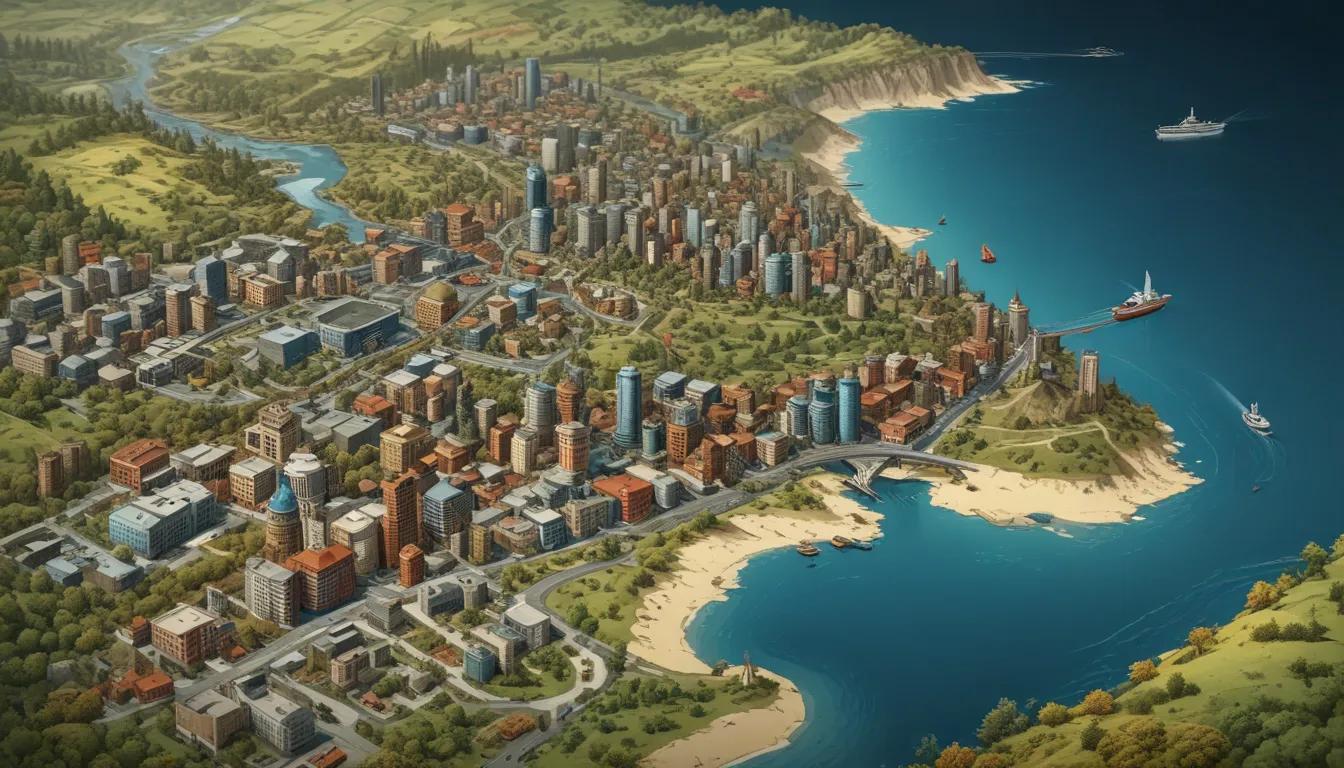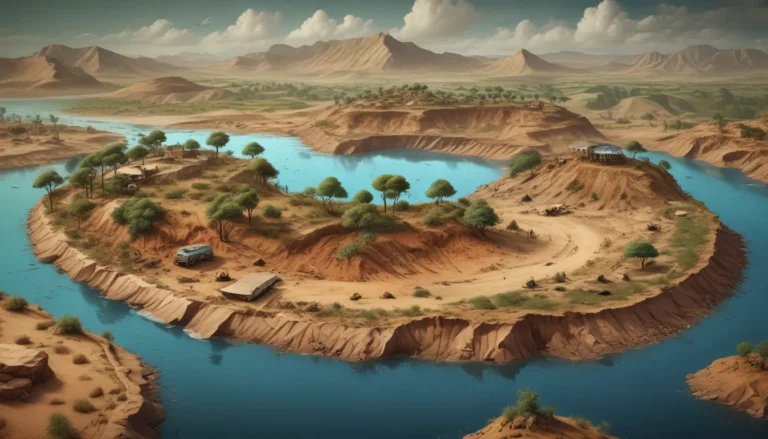A Note About Images: The images used in our articles are for illustration purposes only and may not exactly match the content. They are meant to engage readers, but the text should be relied upon for accurate information.
In today’s fast-paced world, where land is a precious commodity, the art of land use planning shines brightly as a guiding force in shaping our communities. Whether it’s crafting sustainable neighborhoods, protecting the environment, or fostering economic growth, land use planning plays a critical role in creating a balanced and vibrant society. Join us on a journey as we uncover 11 captivating facts about land use planning that will engage your mind and inspire your understanding of this dynamic field.
Unveiling the Power of Land Use Planning
Land use planning serves as a superhero for our environment, economy, and community. It acts as a compass, guiding us towards sustainable, safe, and thriving neighborhoods while safeguarding nature and nurturing economic progress. It is more than just maps on paper; it is a living, breathing process that adapts to the ever-evolving world around us, much like a puzzle that requires constant rearrangement to fit in new pieces.
The Crucial Role of Land Use Planning in Sustainable Development
At the core of land use planning lies its vital role in promoting sustainable development. By making informed decisions about how to best allocate land for residential, commercial, agricultural, and recreational activities, land use planning ensures the efficient utilization of our land resources for current and future generations.
Preventing Urban Sprawl Through Effective Planning
Urban sprawl, the unchecked spread of cities into surrounding areas, can be mitigated through effective land use planning. By promoting compact, walkable communities and preserving green spaces, land use planning fosters well-designed developments that encourage economic vitality and reduce reliance on private vehicles.
Championing Environmental Conservation Through Planning
Land use planning serves as a guardian of our natural resources, playing a critical role in preserving biodiversity and protecting ecologically sensitive areas. By identifying and safeguarding these areas, land use planning promotes the sustainable use of land and natural resources, ensuring a harmonious coexistence between human development and the environment.
Enhancing Quality of Life Through Thoughtful Planning
Well-planned land use enriches the quality of life for residents by providing access to amenities, green spaces, recreational facilities, and essential services. By creating vibrant, livable communities that support health, well-being, and social interaction, land use planning contributes to the overall happiness and satisfaction of residents.
Fostering Economic Development Through Strategic Planning
Strategic land use planning serves as a catalyst for economic growth by attracting investment, stimulating job creation, and supporting the development of sustainable industries. By creating opportunities for mixed-use development and vibrant urban centers, land use planning nurtures a conducive environment for local businesses to thrive.
Mitigating Environmental Hazards Through Zoning and Regulation
Through careful zoning and regulation, land use planning helps minimize the risks associated with exposure to environmental hazards such as pollution, noise, and hazardous materials. By ensuring that sensitive land uses are separated from potentially harmful activities, land use planning safeguards public safety and well-being.
Embracing Smart Growth Principles for Sustainable Communities
Smart growth principles, including compact development, mixed land uses, and transit-oriented design, are fundamental to effective land use planning. By promoting sustainable and efficient land use patterns that reduce reliance on automobiles, land use planning helps create communities that are accessible, environmentally friendly, and economically viable.
Building Disaster Resilience Through Strategic Planning
Land use planning plays a crucial role in building resilience to natural disasters by guiding development away from high-risk areas and promoting the implementation of resilience measures. By strategically locating infrastructure, emergency services, and evacuation routes, land use planning helps protect communities from potential hazards and ensures their safety in times of crisis.
The Importance of Stakeholder Engagement in Planning
Effective land use planning thrives on stakeholder engagement, involving community members, businesses, and local government officials in decision-making processes. By promoting collaboration and participation, land use planning ensures that diverse perspectives are considered, leading to more inclusive and sustainable land use plans that reflect the needs and aspirations of the community.
A Continuous Journey: Land Use Planning as a Dynamic Process
Land use planning is not a static event but a continuous and dynamic process that requires regular evaluation, monitoring, and adaptation to respond to changing societal needs, technological advancements, and environmental challenges. By embracing this dynamic nature, land use planning remains relevant and effective in addressing the evolving demands of our communities.
Empowering Local Communities Through Participation
Local communities play a pivotal role in land use planning processes, influencing the future development and growth of their neighborhoods. By actively engaging in decision-making processes, residents can directly shape the landscape of their communities, ensuring that their values, needs, and aspirations are reflected in land use plans.
In conclusion, land use planning is an intricate and essential field that shapes the way we interact with our environment and each other. It encompasses a broad spectrum of considerations, from the vast lands devoted to agriculture to the intricate regulations governing urban development. By understanding the intricacies and importance of land use planning, we can appreciate the complexity of creating sustainable communities and actively contribute to shaping a better future for all.
Frequently Asked Questions
Q: What is land use planning?
A: Land use planning is the process of determining the appropriate use, development, and conservation of land to achieve specific goals and objectives.
Q: Why is land use planning important?
A: Land use planning is crucial as it guides the sustainable and responsible use of land, promotes efficient resource utilization, prevents environmental degradation, and fosters livable communities.
Q: How can individuals get involved in land use planning?
A: Individuals can participate in land use planning by engaging in public consultations, working with local government officials, joining community organizations, and staying informed about planning policies and developments.
Q: What role does technology play in land use planning?
A: Technology plays a crucial role in land use planning by providing tools for data analysis, spatial visualization, simulation models, and public engagement platforms to enhance the efficiency and inclusivity of the planning process.
With a commitment to providing accurate and engaging content, we strive to deliver a wealth of diverse insights and information contributed by real users like you. Each fact on our site undergoes a meticulous review process by our dedicated editors to ensure its credibility and authenticity. Trust in our dedication to quality and authenticity as you explore and learn with us.






